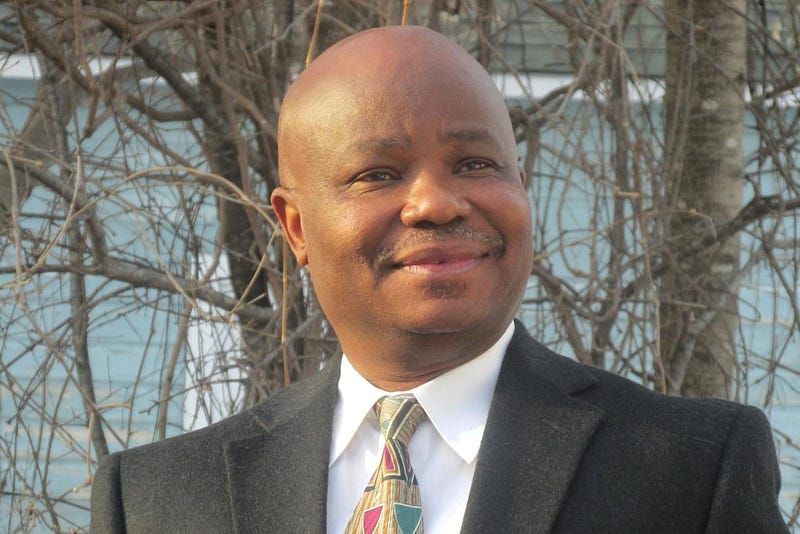
Professor Joseph Mwantuali has recently filed a lawsuit against Hamilton College, alleging repeated instances of racist conduct. Photo courtesy of Hamilton College.
Recently, Professor of French and Francophone Studies Joseph Mwantuali filed a lawsuit against Hamilton College for racial discrimination. Over the course of his fifteen years teaching at Hamilton, Professor Mwantuali described several instances of racist offenses he encountered from faculty and administration alike. Unfortunately, Professor Mwantuali is not alone. A very similar situation played out with former Professor of Anthropology Mariam Durrani (who now teaches at American University). Moreover, students of color on Hamilton’s campus often report an alienation directly caused by the generalizations within diversity programs aimed to acclimate already successful students of color to college campuses. Broadly speaking, Hamilton’s diversity, equity and inclusion (D.E.I.) initiative fails to address the specific, individualized needs of people of color on college campuses — and often ignores the diversity of faculty. I will highlight in this article how the generalizations and tokenization within mainstream diversity initiatives inherently fail to address the very issues they were designed to address.
Mainstream D.E.I. culture is a new concept. Diversity initiatives date back to the 1960s with the advent of affirmative action, but mainstream D.E.I. culture as it stands now is a concept of the present. Some might argue that D.E.I. initiatives are a vital part of establishing a student body that is representative of a wide population. By contemporary standards, failures of predominantly white institutions (PWIs) to diversify their student bodies are quite odd. It is not ‘politically correct,’ one might say. A limited student body leads to a limited scope of knowledge. Preventing an inherent ignorance found in predominantly white spaces is what makes D.E.I. initiatives valuable.
Undeniably, the College’s D.E.I. initiative has been putting in the work. Hamilton’s student population has diversified significantly over the years, revealing a notable trend of representation. Thus far, the Class of 2026 is Hamilton’s most diverse student body, including 29.5% U.S. students of color, and 7.5% international students. This means that Hamilton’s homogeneity is bound to decrease over the years — but solely in its student population, it seems. According to Hamilton’s webpage devoted to “Tracking Progress” of D.E.I. initiatives, only 23.6% of faculty identifies as people of color — a disappointing 4.8% increase from a decade before. It is evident that PWIs fail to foster an inclusive culture for students and faculty of color alike. The retention rates for faculty of color at Hamilton are concrete evidence of this trend. Of nine faculty members who resigned in the last academic year, five were people of color, according to a
Spectator
article by Abbie Wolff ’22. Moreover, it is no surprise that most tenure-track faculty are white, while visiting faculty are disproportionately people of color, as evidenced on Hamilton’s website. I argue that this is sufficient evidence that hiring faculty of color is not a priority within Hamilton’s D.E.I. movement. Even worse: the injudicious tokenization of faculty of color leads to a surface-level perception that all is fine within faculty of color’s work environment. However, it is evident that this reality is far from the truth.
The lack of an inclusive culture for faculty of color only advances and strengthens the alienation of students of color in PWIs. As a member of Hamilton’s Opportunity Programs (OPs), I can testify as to the work that it does. It has assisted students like myself (predominantly low-income, first-generation and historically marginalized youth of color) with financial aid and mentoring and tutoring services. It makes a difference in our daily lives. The people involved with these programs work tirelessly to provide for us; by critiquing the work they do, I do not mean to express ingratitude, but rather to express a sense of incertitude. These spaces are inherently problematic as I continually find that they rely on an assumption that due to their students generally attending underfunded high schools, these students are significantly behind their peers. However, as Nevaeh Gutierrez ’25 highlights in her
Hamilton Monitor
article ‘Colonizing My Life Back,’ we were top of our classes in high school. We were top-performing students. Although not enough transparency is provided by Hamilton’s Admissions Office on the specific demographics of OP students, I typically find that there are a notable few who come from wealthy backgrounds and/or attended elite boarding schools. Meanwhile, I attended a Title I high school that was extremely underfunded to the point where its understaffing meant that the school could not carry out its discriminatory “bathroom escort” policy effectively — because in wanting to pee, I apparently meant to sell drugs. I mention this for sarcastic effect, but only to a certain extent, because it was quite true. This constant questioning of the very own systems meant to assist students like me only intensified my sense of alienation. From there, I had to rely upon many faculty of color to find support, although it seems that most of them are going to leave soon.
My case is not unique. It is the case of many students of color on Hamilton’s campus. If the mainstream D.E.I initiative within Hamilton’s campus fails to address the needs of faculty of color, Hamilton will not only be establishing an unwelcoming environment for them. This could be a slippery slope: if Hamilton continues to neglect broadening the scope of its D.E.I initiative, it will be detrimental to the experience of the increasing population of students of color as well.